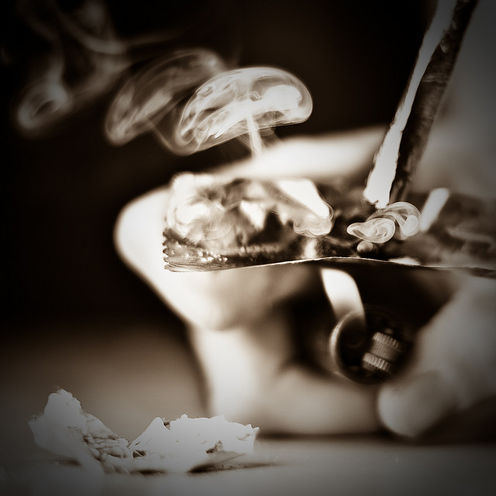
Prime Minister Tony Abbott today launched a taskforce to tackle the growing problem of ice. “As a citizen and as a parent I am appalled at what is happening on our streets and in our homes,” he said, adding that the taskforce will canvass the problems and report back with a strategy by mid year.
But while Australia certainly has a problem with ice, it’s hardly an epidemic. Let’s consider the data on use and harms. But first, what is it?
Methamphetamine is a potent stimulant drug that comes in several forms: a powder, speed; a crystalline form, crystal meth or ice; and a base form, resulting from poor conversion of methamphetamine oil to crystalline form.
While the chemical composition of these three forms is the same, the potency varies, with ice the strongest.
Illicit methamphetamine use is relatively high around the world, but Southeast Asia in particular is a major hub for production. This impacts on Australia, which has one of the highest rates of use in the world.
Yet, the prevalence of methamphetamine use in Australia has remained stable since 2001, at around 2% of the population. That is, the number of people who use methamphetamine has not changed in at least the last ten years.
However, there have been significant shifts recently in the way methamphetamine is used that have created significant issues for users and the community.
Changing use
First, the number of methamphetamine users who prefer ice over other types of methamphetamine has doubled, from 27% in 2007 and 22% in 2010, to 50% in 2013. The proportion of people using it at least weekly has grown, from 9.3% in 2010 to 15.5% in 2013.
There has also been a significant increase in smoking as the main route of administration, from around 20% of regular users to 40%.
Other data show an increasing purity of ice, from an annual average of 21% in 2009, to 64% in 2013. The purity of traditionally lower-grade speed has also been increasing, from 12% to 37% between 2009 and 2013.
The price of both crystal and powder methamphetamine, based on purity, is now more similar than in previous years, making ice a more economical purchase for users.
Growing harms
There has been a corresponding increase in people seeking treatment at drug and alcohol clinics. The proportion of treatment “episodes” where methamphetamine was the principal drug of concern doubled from 7% in 2009-10, to 14% in 2012-13.
There has been an 88% increase in ambulance call-outs in metropolitan Victoria and a 198% increase in call outs for methamphetamine-related incidents in some regional areas. People in regional areas are twice as likely to use methamphetamine as those in major cities (and are more likely to drink at risky levels and smoke cigarettes).
Hospital presentations for methamphetamine-related problems are the second-highest among the four major illicit drug types, with 182 “separations” per million people in 2010-11.
Finally, arrests for methamphetamine-related crimes have increased by 30% between 2010-11 and 2011-12. And a review of more than 80,000 Queensland roadside drug-tests between 2007 and 2012 found methamphetamine to be present in 41% of positive results.
Getting help
Data we are currently analysing from the government’s National Drug Strategy Household Survey suggest these changes are driven primarily by those who use more than once a month. This group is more likely experience harms from regular use, such as dependence, mental health problems and sleeping troubles, and would benefit from early treatment.
Irregular users are not at high risk of dependence but may experience acute harms, such as overdose, and require harm-reduction strategies.
Both of these groups are, in some ways, hidden populations. They may not disclose their use of methamphetamine to their GP or other health professionals unless asked, and may not present to tertiary treatment services until their problems are severe. There is a time lag of around five years between early methamphetamine-related problems and treatment.
While investment in policing and prevention is important, the bulk of the changes in use and the resulting harms are due to the small proportion who use more regularly and are at risk of dependence.
We know that every dollar spent on drug treatment we save A$7 to the community, compared with A$2 for stronger policing. We need to ensure that treatment is a significant part of the solution to the problems created by changes in methamphetamine use.
Nicole Lee does not work for, consult to, own shares in or receive funding from any company or organisation that would benefit from this article, and has no relevant affiliations.
